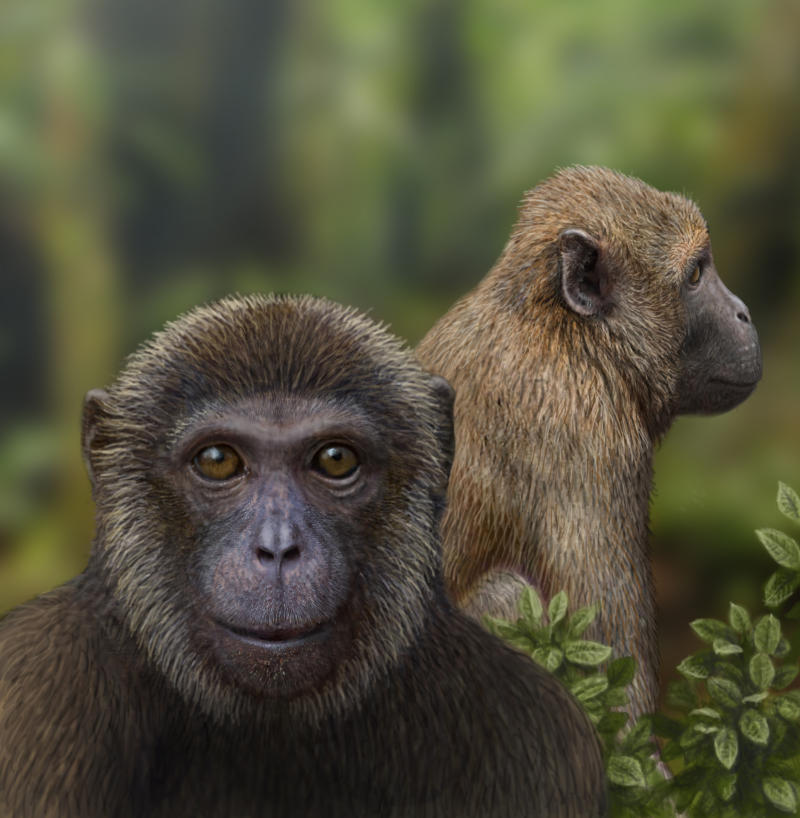Please note: Osher Rainforest will be closed for maintenance Jan. 14–16.
Science News
Ancient Primates
May 17, 2013
by Molly Michelson

The Rift Valley in East Africa holds many secrets to our primate past. Our diminutive ancestor Lucy was discovered there and a publication this week in Nature reveals even older primate fossils, farther down our family tree.
Nancy Stevens, of Ohio University, and her colleagues have been working in a single fossil site in the Rukwa Rift Basin of Tanzania for several years. Over the course of two years, Stevens uncovered two separate fossils—a lower jawbone with several teeth, and a tooth with a jaw fragment. Each fossil represents a different, new species and remarkably, two of the oldest species ever identified from their groups.
The two primate fossils come from different groups—apes (of which we’re part) and Old World monkeys. Rukwapithecus fleaglei is the new ape species (pictured, left) and Nsungwepithecus gunnelli is the new Old World monkey (pictured, right).
Using an approach that dates multiple minerals contained within the rocks, geologists determined a precise age for the specimens—25 million years old. The age is significant because few primate fossils date back to that era, the late Oligocene.
In addition, the new discoveries can help us understand when these two groups (apes and Old World monkeys) diverged. Time estimates from analyses of DNA sequences from living primates do not agree with those suggested by the primate fossil record. Studies of clock-like mutations in primate DNA have indicated that the split between apes and Old World monkeys occurred between 30 million and 25 million years ago. But prior to these finds, the fossil evidence had only gone back 20 million years.
“Fossils from the Rukwa Rift Basin in southwestern Tanzania provide the first real test of the hypothesis that these groups diverged so early, by revealing a novel glimpse into this late Oligocene terrestrial ecosystem,” Stevens says.
Undoubtedly, the researchers will uncover more fossils in the area to test the hypothesis. “The rift setting provides an advantage in that it preserves datable materials together with these important primate fossils,” says co-author Eric Roberts of James Cook University. Dig on!
Image: Mauricio Anton